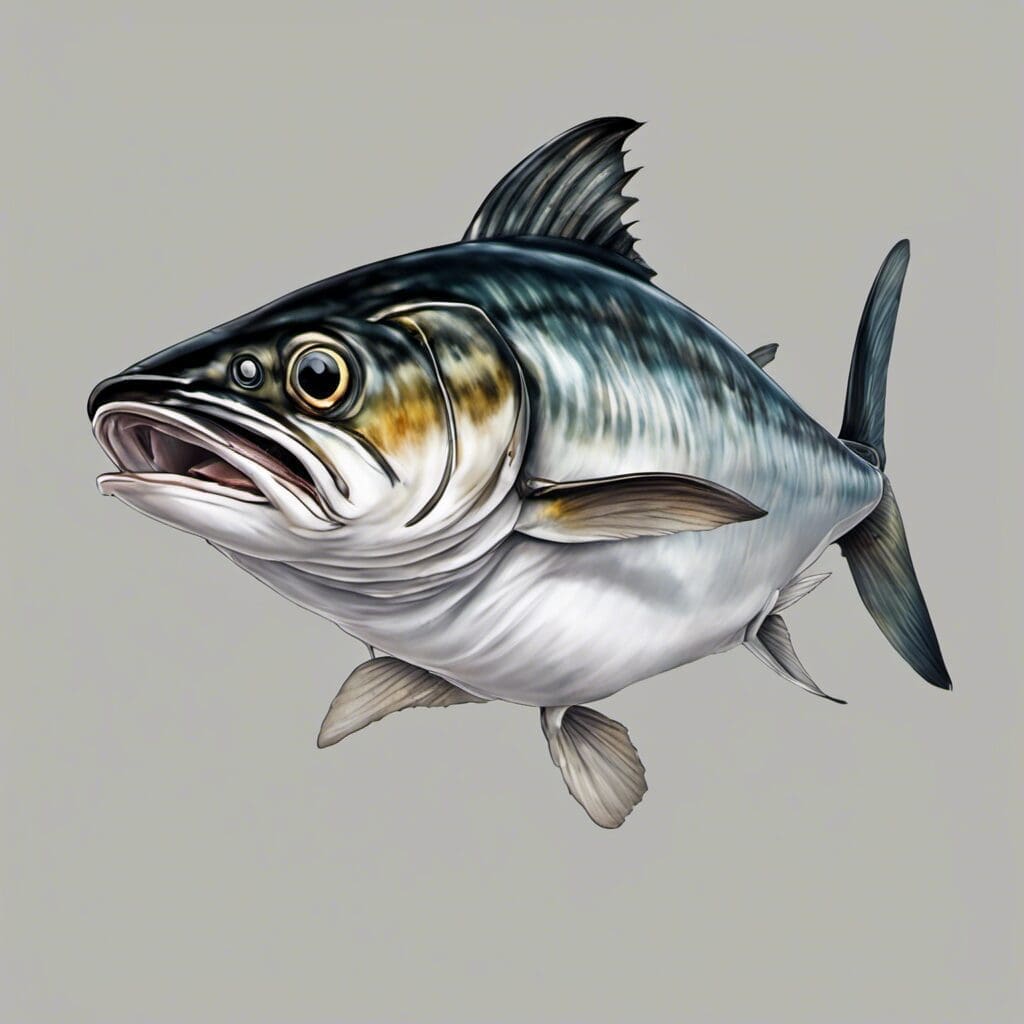Introduction
The Atlantic Mackerel, scientifically known as Scomber scombrus, is part of the Scombridae family. It is a fast-swimming, pelagic fish with a streamlined body and snapping jaws, recognized by its distinct blue-green dorsal side and silver belly.
Conservation Status
The Atlantic Mackerel is currently categorized as a species of “Least Concern” on the conservation scale. However, existing conservation efforts, such as size and bag limit regulations at various locations worldwide, seek to maintain the population’s health and control overfishing.
Statistics
| Statistic | Average | Range |
|---|---|---|
| Length | 30 cm | 17 - 45 cm |
| Weight | 0.5 kg | 0.3 – 1.5 kg |
| Average Lifespan | 17 years | |
| Maturation Age | 2-3 years |
Distribution
The Atlantic Mackerel is a migratory fish, distributed from the east coast of North America to the North Sea and The Baltic Sea. They are known to seasonally migrate in schools, moving north and close to shore in the summer and returning south and to deeper water in the winter.
Habitats
This species dwells in temperate and subarctic waters, commonly found at around 10-200 meters in depth range. They prefer water temperatures of 8-11 °C.
When and Where to See
The Atlantic mackerel can be typically seen during the summer months when they move closer to shore. The best time to see this species is generally during the early morning and late evening when they feed.
Best Fishing Locations
Top locations are scattered across the Atlantic coasts, including:
1. Cape Cod, Massachusetts, USA
2. Chesapeake Bay, Maryland, USA
3. Reykjavik, Iceland
4. Galway Bay, Ireland
5. North Sea, UK and Norway
6. The Baltic Sea, Denmark and Poland
7. St. Lawrence River, Canada
To find Atlantic Mackerel, look for warm surface currents, which attract their prey and therefore, the mackerels themselves.
How to Catch
Atlantic Mackerel prefer small but fast-moving bait such as herring or spoons. They also respond well to fly fishing and trolling techniques. The prime time to catch them is during the early morning or late evening during summer and fall.
Identification Guide
Atlantic Mackerel have a fusiform body shape which is blue-green on the dorsal side and silver on the belly, and distinguishable “mackerel” markings of wavy black lines. It can be easily confused with King Mackerel, but a close look at the lateral line (curved in King, relatively straight in Atlantic) can help in the identification.
Culinary
Atlantic Mackerel is a tasty, oily fish rich in Omega-3 fatty acids. It can be grilled, baked, smoked, or fried and served with a variety of sauces. There are a multitude of recipes available for preparation, including the popular dish ”Mackerel in Tomato Sauce”. Nutritional information includes 21 g of protein, and 13.2 g of fat per 100 g of fish.
Additional Information
Atlantic Mackerel are opportunistic feeders, eating a diet primarily of smaller fishes and invertebrates. Mating occurs once a year, usually in summer, following complex courtship rituals. Their biggest threats include predatory fishes and sea birds, along with human-induced problems like overfishing and pollution. In some cultures, they are considered a symbol of harvest and prosperity.
References and Further Reading
- FishBase – Atlantic Mackerel
- FishingBase – Mackerel Atlantic

